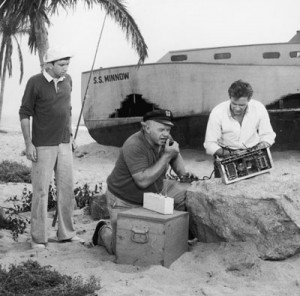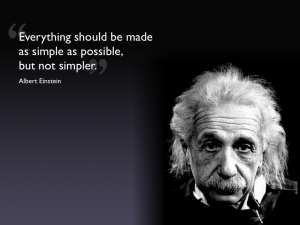Kangaroo Kronicles 26 – Making Big Bucks with Warehouses
Saturday, September 17, 2011 By Stu Silver ·0
Kangaroo Kronicles 26– Making Big Bucks
with Warehouses
By
“Uncle Zally” / Stu Silver
___________________________________________
 I don’t want you to think I’m a one trick pony, so this week I am going to discuss a different housing investment I am passionate about, ware – housing.
I don’t want you to think I’m a one trick pony, so this week I am going to discuss a different housing investment I am passionate about, ware – housing.
I chose affordable housing because there will be a constant need for low cost shelters. I chose affordable warehousing, because of the constant need for low cost space for businesses to rent.
As we become more and more of a service economy, and less and less of a manufacturing economy, warehousing will have a strong demand. There will always be a warehouse need for plumbers, electricians, cabinet makers, building contractors, wholesalers, distributers, auto repair, parts, assemblers, etc., and just plain storage for stuff.
I am also unsure of the negative effect that the Internet will have on retail stores and offices. I am concerned that as people became more “connected,” they will work at home, instead of going to an office, and shop over the Internet, rather than making a trip to the store. Then there is effect that Big Boxes, like Walmart, Target, K-Mart, CVS, and Walgreens, are having on Mom and Pop retailers, forcing them out of business, so we felt more comfortable with warehouses.
 Speaking of the Internet, we are shocked at the effect it has had on how we reach our customers, both buyers and tenants. We figured the trusty sign, MLS, and the newspaper classifieds would suffice in our business well into the next century. Enter CraigsList, Loopnet, and Costar. We now reach 90% of our customers through the Internet.
Speaking of the Internet, we are shocked at the effect it has had on how we reach our customers, both buyers and tenants. We figured the trusty sign, MLS, and the newspaper classifieds would suffice in our business well into the next century. Enter CraigsList, Loopnet, and Costar. We now reach 90% of our customers through the Internet.
I was going to title this blog “Backing into Money,” but chose instead “Making Big Bucks” because when I use those magic three words, my readership goes up magically. I am going to show you how to make money in warehousing, in South Florida, in 2011. It probably applies to the rest of the U.S., but I will leave that up to you to adapt as you see fit. The process is the same – how to determine what price to pay for a warehouse so you will make a great return today, and a fantastic return when we are A.R. – After Recession, and return to an N.E. – a Normal Economy.
In the good old days, 5 -10 years B.R., Before Recession, a potential warehouse tenant was concerned about the size of the space they were renting, and the amenities of that space, and then the price per square foot. Now, D.R., During Recession, this is how the conversation goes:
“I’m calling about renting a warehouse.”
“Okay, how many square feet do you need?”
“I need $500 per month square feet.”
Gone is the discussion about the size of the space and price per square foot. The prime concern now is the rental budget of the person calling. There are two major price points – $500 per month, and $1000 per month.
The most popular sizes are 2,000 square feet for $500/month and 4,000 square feet for $1,000 month. These are gross numbers. Tenants don’t want to pay CAM, insurance costs, real estate taxes, or any extras.
 We have some of the lowest price rentals around, hence the name of our business, Cheap Rent Inc., and our website, www.CheapRentInc.com . We get four times as many calls for $500 per month spaces than $1,000 per month. When we exceed $1,000 per month, it feels like the warehouse space is shipwrecked on a deserted island.
We have some of the lowest price rentals around, hence the name of our business, Cheap Rent Inc., and our website, www.CheapRentInc.com . We get four times as many calls for $500 per month spaces than $1,000 per month. When we exceed $1,000 per month, it feels like the warehouse space is shipwrecked on a deserted island.
For instance, we have a vacant space that is 22,000 square feet. If we priced it at the same rate as 2,000 square feet, we would charge $5,500 per month. Instead, we have it listed at $2,500 per month, and had only one call in the last month. Sometimes I check CraigsList and Loopnet to assure myself the ad is still in.
 So given the way the customer is thinking, what can you pay for a warehouse, make a reasonable return of 10%, given that nobody knows when this recession is going to end, except God, and She’s not telling anyone, except maybe Warren Buffett because God thinks he’s cute. Are you ready? Here is how you” Back Into Money.”
So given the way the customer is thinking, what can you pay for a warehouse, make a reasonable return of 10%, given that nobody knows when this recession is going to end, except God, and She’s not telling anyone, except maybe Warren Buffett because God thinks he’s cute. Are you ready? Here is how you” Back Into Money.”
First, let’s assume we are looking at buying a 4,000 square foot warehouse that is divided into two 2,000 square foot spaces, which is superior to one 4,000 square foot space because it will garner four times as many calls when you need to find a new tenant.
You are going to get $1,000/month in gross rent, or $12,000 per year. If you want a 10% return, you must pay $120,000 for it.
But hold on. If you have to pay for real estate taxes (2% of value of property) and insurance (2% of value of property) and hopefully lay off the repairs and ground maintenance on the tenants, then you have to subtract 4% of $120,000 for those costs, or reduce rent by $4,800, bringing your net rent to $7,200 per year. For a 10% return, now the most you can pay is $72,000.
 For those of you that have mathematical gifts, you will object to subtracting $4,800 for insurance and taxes because you are now using a price of $72,000, not $120,000. Good old Algebra comes into play here, and the formula is this (email me for an explanation) :
For those of you that have mathematical gifts, you will object to subtracting $4,800 for insurance and taxes because you are now using a price of $72,000, not $120,000. Good old Algebra comes into play here, and the formula is this (email me for an explanation) :
Price of Property = 10 X Gross Rent / 1.4
= 10 X 12,000 / 1.4 = $86,000
Check it. If you pay $86,000, you will get a net return of $8,600 per year, a 10% return, after paying $3,400, or 4% for insurance and taxes.
Divide $86,000 by the total square feet, 4,000, and you wind up with:
Price per square foot = Price / Square feet
= $86,000/4,000 = $22 /sq foot
The average price of warehouses selling now is $45/sq foot, the majority being bought by users, owners that were moving their business to it, and not investors. Investors would have to pay ½ that price per square foot, and some are when the right deal becomes available. The sellers of the warehouses, mostly bank REO departments, have a choice of waiting for a user, or selling for half the price to an investor.
The cost to create those same warehouses today is at least $100 per square foot when you include the land, engineering, site prep, etc., so a user or investor should be happy to buy today at half to a quarter of what the building will be worth A.R. in a N.E..
 That is why I am patiently hunting for warehouses at $22/sq foot, that are divided into 2,000 sq foot units.
That is why I am patiently hunting for warehouses at $22/sq foot, that are divided into 2,000 sq foot units.
We coined the phrase, “Mobile Homes are the little boxes that spit out money.”
Here is a new one: “Warehouses are the big boxes that spit out money.”
If enough of you are interested, next week I’ll show you how to manage warehouses for fun and profit.
Until then, Cheers, Mate!
-
Filed under Articles · Tagged



